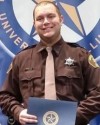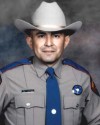U.S. Constitution
See other U.S. Constitution Articles
Title: Court Shoots Down Cop's Assertion That Driving Without Breaking Any Laws Is 'Suspicious'
Source:
TechDirt
URL Source: https://www.techdirt.com/articles/2 ... g-any-laws-is-suspicious.shtml
Published: Sep 19, 2019
Author: Tim Cushing
Post Date: 2019-09-20 09:43:05 by Deckard
Keywords: None
Views: 2463
Comments: 9
Must be tough out there for cops. Literally everything is suspicious. And there are only so many hours in the day. Since no court is willing to end the tradition of pretextual stops, anything that can be described as suspicious has been used to initiate fishing expeditions. A few courts have called out this tendency to view almost everything humans do as indicative of criminal behavior. This is one of the better call-outs, as it gives some indication of just how many "training and experience" assertions the court has had to wade through while dealing with law enforcement assertions about reasonable suspicion. A logical reasoning sequence based upon some “training and experience” — because drug traffickers have been seen breathing, then breathing is an indicia of drug trafficking. Because they normally have two hands, then having two hands is an indicia of drug smuggling. Silly — maybe, but one can wonder if that is the direction we are heading. Whether it be driving a clean vehicle, or looking at a peace officer, or looking away from a peace officer, or a young person driving a newer vehicle, or someone driving in a car with meal wrappers, or someone driving carefully, or driving on an interstate, most anything can be considered as indicia of drug trafficking to law enforcement personnel. Maybe this is because drug smugglers just happen to be human beings and being such, they tend to engage in the same innocuous acts in which law abiding citizens engage. See Gonzalez-Galindo v. State, 306 S.W.3d at 896 (observing that “[c]riminals come in all makes and colors. Some have hair, some do not. Some are men, some are not. Some drive cars, some do not. Some wear suits, some do not. Some have baseball caps, some do not. Some want attention, some do not. Some have nice cars, some do not. Some eat spaghetti, some do not. And, sometimes, some even engage in innocent activity.”) This is in addition to these data points, all presumed to be "suspicious" behavior by law enforcement officers: That's the standard law enforcement holds itself to. Fortunately, some courts refuse to accept this lower standard of suspicion. The Arizona Court of Appeals is one of those courts. This recent decision [PDF] overturns a lower court's inexplicable support of a cop's extremely dubious "reasonable suspicion" claims. (via The Newspaper) The defendant was pulled over by a police officer shortly after leaving a bar. According to the unnamed officer, the defendant's driving was suspicious. Here's what the officer observed: At the June 2018 evidentiary hearing, the officer testified that, while on patrol for a DUI task force on December 7, 2017 around 9:30 p.m., he first observed Flynn when he was exiting a strip mall parking lot near Dobson and Guadalupe Roads in Mesa. The strip mall contained several restaurants that were open at the time but, because the officer knew there was a hole in a fence on the opposite side of the complex that separated the strip mall parking lot from an adjacent bar, he followed Flynn for approximately two miles. During this time, the officer estimated Flynn’s speed at between twenty-eight and thirty-five miles per hour, never reaching the posted limit of forty-five miles per hour. In the course of following Flynn, the officer observed no traffic violations or other clues of impairment. This was the entirety of the officer's assertion: that he had observed literally nothing else than a person leaving a strip mall and driving home while obeying all traffic laws and otherwise appearing to be sober. The officer tried to claim that the driver's inability to hit the posted speed limit was itself suspicious. This ignores that fact that a speed limit limits top speed. It does not make driving at a lower speed illegal, nor necessarily indicate the driver is impaired. On top of that, the officer could not deliver any reliable testimony about his speed limit-related observations. The officer testified he initiated the stop solely because Flynn left the vicinity of a bar and then traveled at a speed that varied but remained below the posted limit. However, the officer did not remember how many times Flynn’s speed varied. He did not have any clear recollection of where the fluctuations occurred or whether Flynn had been required to stop or slow down for any of the seven light-controlled intersections the pair encountered. Nor was he able to testify as to how frequent or great a speed variance would need to be to qualify as a clue of impairment. With that, the suppression order is reinstated and the prosecution loses all the evidence the cop obtained during his suspicionless stop. The problem, of course, is that a ruling like this won't deter officers from performing suspicionless stops. It will just make them work a bit harder when crafting their assertions. People are still going to get stopped for completely bullshit reasons and allow taxpayers to fund the redress of grievances.
from the scofflaws-not-even-bothering-to-break-the-law-anymore dept
Post Comment Private Reply Ignore Thread
Top • Page Up • Full Thread • Page Down • Bottom/Latest
#1. To: Deckard (#0)
(Edited)
Please Join in Honoring Officers Killed in 2019 - Master Police Officer Joseph William Shinners Provo Police Department, UT EOW: Saturday, January 5, 2019 Cause: Gunfire Police Officer Dale James Woods Colerain Township Police Department, OH EOW: Monday, January 7, 2019 Cause: Struck by vehicle Police Officer Clayton Joel Townsend Salt River Police Department, TR EOW: Tuesday, January 8, 2019 Cause: Struck by vehicle Police Officer Natalie Becky Corona Davis Police Department, CA EOW: Thursday, January 10, 2019 Cause: Gunfire Illinois State Police, IL EOW: Saturday, January 12, 2019 Cause: Vehicular assault Birmingham Police Department, AL EOW: Sunday, January 13, 2019 Cause: Gunfire Supervisory Deputy US Marshal Norman D. Merkel United States Department of Justice - United States Marshals Service, US EOW: Wednesday, January 16, 2019 Cause: Heart attack Deputy Sheriff Ray Elwin Horn, III Comal County Sheriff's Office, TX EOW: Thursday, January 17, 2019 Cause: Heart attack Police Officer Sean Paul Tuder Mobile Police Department, AL EOW: Sunday, January 20, 2019 Cause: Gunfire Lieutenant Robert "Bo" McCallister Susquehanna Township Police Department, PA EOW: Sunday, January 20, 2019 Cause: Gunfire Deputy Sheriff Joshua Bryan "LJ" Ryer, Jr. Glascock County Sheriff's Office, GA EOW: Tuesday, January 29, 2019 Cause: Automobile crash Baton Rouge Police Department, LA EOW: Friday, February 1, 2019 Cause: Motorcycle crash Clermont County Sheriff's Office, OH EOW: Saturday, February 2, 2019 Cause: Gunfire Border Patrol Agent Donna Doss United States Department of Homeland Security - Customs and Border Protection - United States Border Patrol, US EOW: Saturday, February 2, 2019 Cause: Struck by vehicle Police Officer Matthew J. Rittner Milwaukee Police Department, WI EOW: Wednesday, February 6, 2019 Cause: Gunfire New York City Police Department, NY EOW: Tuesday, February 12, 2019 Cause: Gunfire (Inadvertent) Chief of Police David P. Hewitt Rising Sun Police Department, IN EOW: Wednesday, February 13, 2019 Cause: Automobile crash Puerto Rico Police Department, PR EOW: Friday, February 15, 2019 Cause: Gunfire Lieutenant Daniel Duane Hinton Florida Highway Patrol, FL EOW: Tuesday, February 19, 2019 Cause: Heart attack Undersheriff Monty Thomas Johnson Pawnee County Sheriff's Office, OK EOW: Thursday, February 21, 2019 Cause: Automobile crash Police Officer Nicholas Scott Galinger Chattanooga Police Department, TN EOW: Sunday, February 24, 2019 Cause: Vehicular assault Sullivan County Sheriff's Office, TN EOW: Tuesday, February 26, 2019 Cause: Gunfire Police Officer Nathan Hayden Heidelberg Midland Police Department, TX EOW: Tuesday, March 5, 2019 Cause: Gunfire Deputy Sheriff Jacob Howard Keltner McHenry County Sheriff's Office, IL EOW: Thursday, March 7, 2019 Cause: Gunfire Colorado State Patrol, CO EOW: Wednesday, March 13, 2019 Cause: Struck by vehicle Deputy Sheriff Ryan Shane Thompson Kittitas County Sheriff's Office, WA EOW: Tuesday, March 19, 2019 Cause: Gunfire Police Officer Paul Thomas Rutherford Phoenix Police Department, AZ EOW: Thursday, March 21, 2019 Cause: Struck by vehicle El Paso County Sheriff's Office, TX EOW: Sunday, March 24, 2019 Cause: Gunfire Illinois State Police, IL EOW: Thursday, March 28, 2019 Cause: Struck by vehicle Illinois State Police, IL EOW: Saturday, March 30, 2019 Cause: Automobile crash Detective Benjamin J. Campbell Maine State Police, ME EOW: Wednesday, April 3, 2019 Cause: Accidental Deputy Sheriff II Spencer Allen Englett Forsyth County Sheriff's Office, GA EOW: Thursday, April 4, 2019 Cause: Duty related illness Sergeant Steven Lawrence Licon California Highway Patrol, CA EOW: Saturday, April 6, 2019 Cause: Struck by vehicle Deputy Sheriff Justin Richard DeRosier Cowlitz County Sheriff's Office, WA EOW: Sunday, April 14, 2019 Cause: Gunfire Police Officer Kyle David Olinger Montgomery County Police Department, MD EOW: Thursday, April 18, 2019 Cause: Gunfire Conservation Officer Eugene Wynn, Jr. Minnesota Department of Natural Resources - Enforcement Division, MN EOW: Friday, April 19, 2019 Cause: Drowned Special Agent in Charge Liquat A. "Leo" Khan United States Army Criminal Investigation Division, US EOW: Tuesday, April 30, 2019 Cause: Heart attack K9 Officer Jordan Harris Sheldon Mooresville Police Department, NC EOW: Saturday, May 4, 2019 Cause: Gunfire Police Officer Robert McKeithen Biloxi Police Department, MS EOW: Sunday, May 5, 2019 Cause: Gunfire Sanibel Police Department, FL EOW: Monday, May 6, 2019 Cause: Heart attack Tennessee Highway Patrol, TN EOW: Monday, May 6, 2019 Cause: Automobile crash Constable Willie Houston "Hoot" West Lowndes County Constable's Office, MS EOW: Thursday, May 9, 2019 Cause: Automobile crash Police Officer William Ray Buechner, Jr. Auburn Police Division, AL EOW: Sunday, May 19, 2019 Cause: Gunfire Police Officer Jesus Marrero-Martínez Manatí Municipal Police Department, PR EOW: Saturday, May 25, 2019 Cause: Gunfire Seminole Police Department, TR EOW: Thursday, May 30, 2019 Cause: Automobile crash Lieutenant Steven Dewayne Whitstine East Baton Rouge Parish Sheriff's Office, LA EOW: Thursday, May 30, 2019 Cause: Automobile crash Police Officer William James Leahy Port Authority of New York and New Jersey Police Department, NY EOW: Thursday, June 6, 2019 Cause: 9/11 related illness Police Officer Albert Ramirez Castaneda, Jr. Grand Prairie Police Department, TX EOW: Friday, June 7, 2019 Cause: Struck by vehicle Police Officer Esmeralda Ponce Ramirez Los Angeles Police Department, CA EOW: Sunday, June 9, 2019 Cause: Automobile crash Sergeant David Jones Fitzpatrick The Colony Police Department, TX EOW: Monday, June 10, 2019 Cause: Heart attack Deputy Sheriff Julius Jamal "Jay" Dailey Monroe County Sheriff's Office, AL EOW: Tuesday, June 11, 2019 Cause: Automobile crash Police Officer Steven James Brown Port St. Lucie Police Department, FL EOW: Wednesday, June 12, 2019 Cause: Heart attack Port Authority of New York and New Jersey Police Department, NY EOW: Saturday, June 15, 2019 Cause: Duty related illness Patrol Officer John David Hetland Racine Police Department, WI EOW: Monday, June 17, 2019 Cause: Gunfire Police Officer Tara Christina O'Sullivan Sacramento Police Department, CA EOW: Wednesday, June 19, 2019 Cause: Gunfire Trooper Jerry Louis Smith, Jr. Nebraska State Patrol, NE EOW: Thursday, June 20, 2019 Cause: Automobile crash Corporal Jose Luis "Speedy" Espericueta, Jr. Mission Police Department, TX EOW: Thursday, June 20, 2019 Cause: Gunfire Police Officer Michael Vincent Langsdorf North County Police Cooperative, MO EOW: Sunday, June 23, 2019 Cause: Gunfire Fulton County Sheriff's Office, IL EOW: Tuesday, June 25, 2019 Cause: Gunfire New York City Police Department, NY EOW: Saturday, June 29, 2019 Cause: 9/11 related illness Deputy Sheriff Carlos A. Ramirez Kendall County Sheriff's Office, TX EOW: Tuesday, July 2, 2019 Cause: Struck by vehicle Police Officer John Ralph Anderson, IV Metro Nashville Police Department, TN EOW: Thursday, July 4, 2019 Cause: Vehicular assault Harris County Sheriff's Office, TX EOW: Saturday, July 6, 2019 Cause: Duty related illness Deputy Sheriff Nicholas Blane Dixon Hall County Sheriff's Office, GA EOW: Sunday, July 7, 2019 Cause: Gunfire Conservation Officer Shannon Lee "Opie" Barron Red Lake Nation Conservation Department, TR EOW: Sunday, July 7, 2019 Cause: Heart attack Stone County Sheriff's Office, AR EOW: Thursday, July 18, 2019 Cause: Gunfire Detective Christopher Cranston New York City Police Department, NY EOW: Saturday, July 20, 2019 Cause: 9/11 related illness Broward County Sheriff's Office, FL EOW: Sunday, July 21, 2019 Cause: Automobile crash Los Angeles Police Department, CA EOW: Saturday, July 27, 2019 Cause: Gunfire Correctional Officer Pedro J. Rodríguez-Mateo Puerto Rico Department of Corrections and Rehabilitation, PR EOW: Thursday, August 1, 2019 Cause: Assault New York City Police Department, NY EOW: Sunday, August 4, 2019 Cause: 9/11 related illness Correctional Administrator Debra Johnson Tennessee Department of Correction, TN EOW: Wednesday, August 7, 2019 Cause: Assault New York State Police, NY EOW: Saturday, August 10, 2019 Cause: 9/11 related illness Officer Andre Maurice Moye, Jr. California Highway Patrol, CA EOW: Monday, August 12, 2019 Cause: Gunfire Deputy Sheriff Stephanie Schreurs Lyon County Sheriff's Office, IA EOW: Tuesday, August 13, 2019 Cause: Automobile crash Orange County Sheriff's Department, CA EOW: Friday, August 23, 2019 Cause: Duty related illness Deputy Sheriff Jose Luis Blancarte Kinney County Sheriff's Office, TX EOW: Friday, August 23, 2019 Cause: Heart attack Texas Department of Public Safety - Texas Highway Patrol, TX EOW: Saturday, August 24, 2019 Cause: Gunfire Chickasaw County Sheriff's Department, MS EOW: Wednesday, August 28, 2019 Cause: Automobile crash Undersheriff Stephen B. McLoud Cayuga County Sheriff's Office, NY EOW: Thursday, August 29, 2019 Cause: 9/11 related illness New York City Police Department, NY EOW: Monday, September 9, 2019 Cause: 9/11 related illness Tuscaloosa Police Department, AL EOW: Monday, September 16, 2019 Cause: Gunfire Gatlin
Thank You ...
Gatlin the spam-bot troll strikes again derailing yet another thread. Any comments on this? This was the entirety of the officer's assertion: that he had observed literally nothing else than a person leaving a strip mall and driving home while obeying all traffic laws and otherwise appearing to be sober. The officer tried to claim that the driver's inability to hit the posted speed limit was itself suspicious. This ignores that fact that a speed limit limits top speed. It does not make driving at a lower speed illegal, nor necessarily indicate the driver is impaired. On top of that, the officer could not deliver any reliable testimony about his speed limit-related observations.
Government is in the last resort the employment of armed men, of policemen, gendarmes, soldiers, prison guards, and hangmen. RIP my brothers & sisters. Thanks for posting this, Gatlin
Any comments on this? Yeah,MY thoughts are this is a public message board,where anyone who wants to comment is free to do so,and also free to express any lawful opinions he or she may have,regardless of who,if anyone,agrees with them or not. You have a problem with that?
In the entire history of the world,the only nations that had to build walls to keep their own citizens from leaving were those with leftist governments.
Any comments on this? Please allow me to call to your attention that today 23 law enforcement officers from the total of 850,000 sworn law enforcement officers in America will be investigated or disciplined for misconduct. While today, the remaining 849.977 dedicated law enforcement officers with begin investigating what will become a total of 8,969,768 crimes for the year. Look at the numbers: Please join with President Trump to honor fallen police officers: Salute,
… de nada … Respect goes both ways: Thank you ... Salute,
You have a problem with that? Not at all. I have a problem when someone deliberately spams the thread and does so only to derail any discussion about the actual article.
Government is in the last resort the employment of armed men, of policemen, gendarmes, soldiers, prison guards, and hangmen. Ok. I didn't personally see that,but I still have chemo-brain,so I suppose it is possible. Could you point it out to me/explain it?
In the entire history of the world,the only nations that had to build walls to keep their own citizens from leaving were those with leftist governments.
Must be tough out there for cops.
Yes, it is – It most Definitely is …
#2. To: Deckard (#0)
#3. To: Gatlin (#2)
(Edited)

The essential feature of government is the enforcement of its decrees by beating, killing, and imprisoning.
Those who are asking for more government interference are asking ultimately for more compulsion and less freedom.
#4. To: Gatlin (#1)
Please Join in Honoring Officers Killed in 2019 -
#5. To: Deckard (#3)
Gatlin the spam-bot troll strikes again derailing yet another thread.
#6. To: Deckard (#3)
Gatlin … strikes again …
Yes, I have another comment. Homicide - 17,316
I stand to honor those other 849.977 brave and dedicated law enforcement officers.
Rape - 135,242
Robbery - 320,185
Aggravated assault - 813,204
Burglary - 1,406,199
Larceny-theft - 5,535,930
Motor vehicle theft - 774,631
https://ucr.fbi.gov/crime-in-the-u.s/2017/crime- in-the-u.s.-2017/tables/table-1
Gatlin
#7. To: GrandIsland (#4)
(Edited)
Thanks for posting this, Gatlin
Gatlin
#8. To: sneakypete (#5)
Yeah,MY thoughts are this is a public message board,where anyone who wants to comment is free to do so,and also free to express any lawful opinions he or she may have,regardless of who,if anyone,agrees with them or not.

The essential feature of government is the enforcement of its decrees by beating, killing, and imprisoning.
Those who are asking for more government interference are asking ultimately for more compulsion and less freedom.
#9. To: Deckard (#8)
Not at all. I have a problem when someone deliberately spams the thread and does so only to derail any discussion about the actual article.
Top • Page Up • Full Thread • Page Down • Bottom/Latest
[Home] [Headlines] [Latest Articles] [Latest Comments] [Post] [Mail] [Sign-in] [Setup] [Help] [Register]
































































































































































